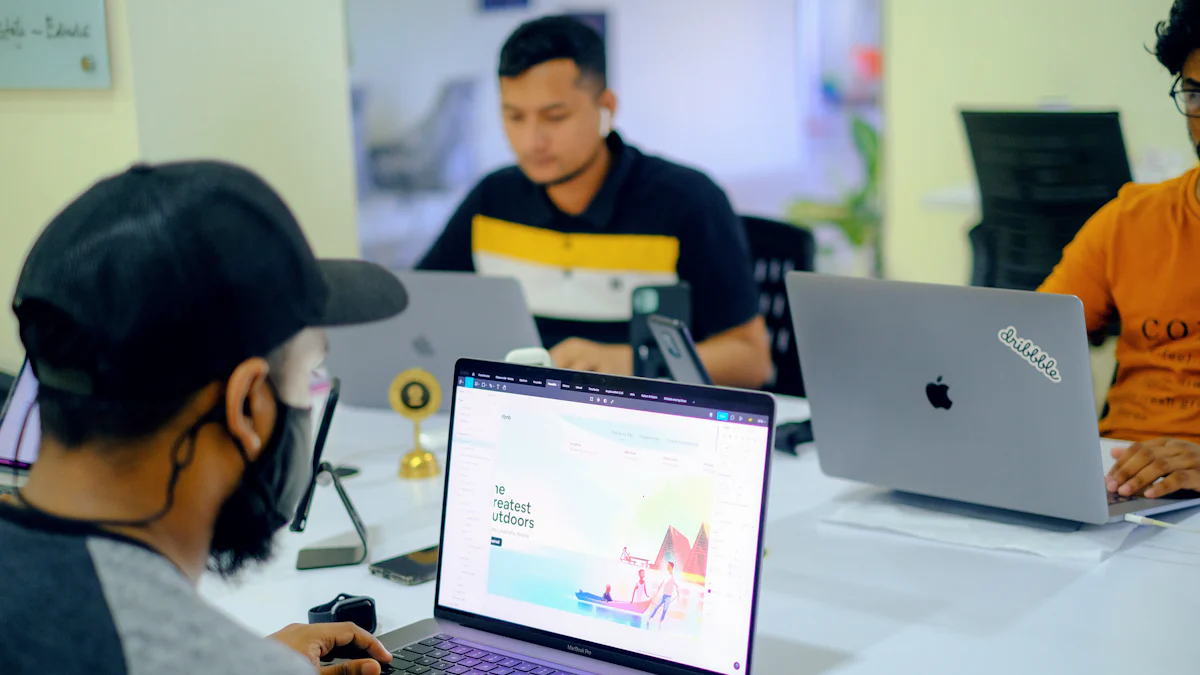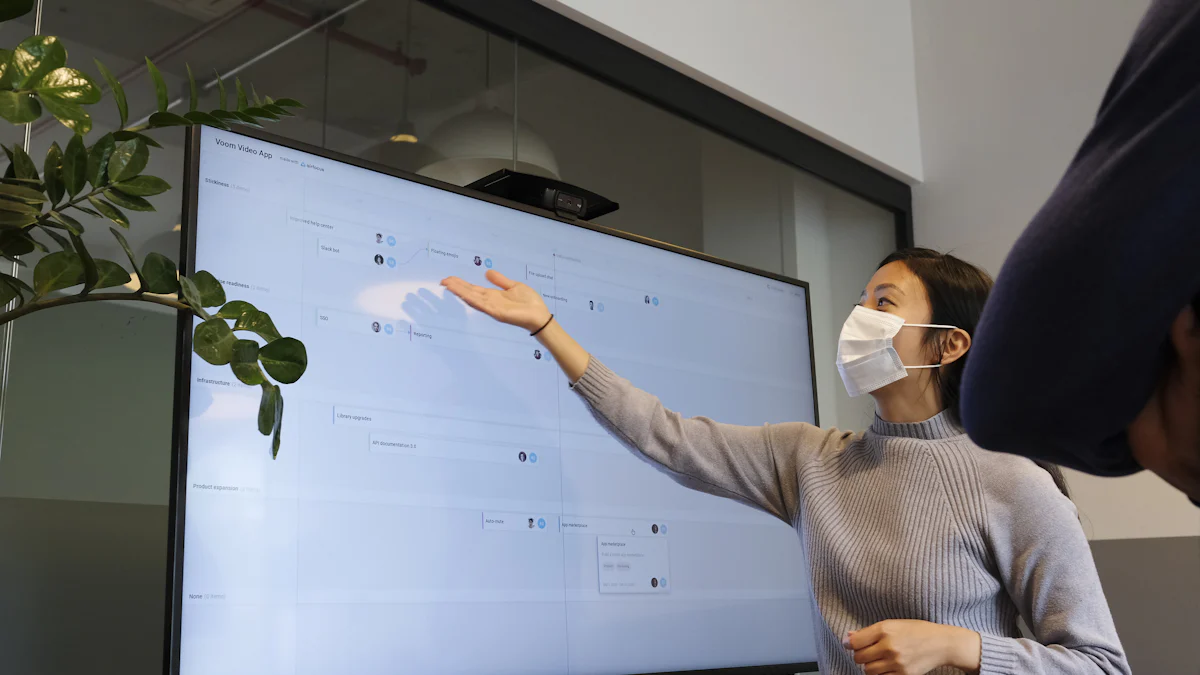10 Proven Tips to Boost Audience Interaction in Webinars

Webinars thrive on connection. When your audience feels involved, they’re more likely to stay engaged, remember key points, and leave satisfied. But how do you make that happen? It’s all about using the right audience engagement techniques.
For example, you can host live Q&A sessions to answer burning questions or use polls to spark curiosity and reward participation. Even something as simple as encouraging chat discussions can create a sense of community. These small actions can transform your webinar into an interactive experience that keeps your audience hooked.
Preparation: Setting the Stage for Success
Creating engaging webinars starts long before the event itself. Preparation is key to ensuring your audience members feel connected and involved. Let’s dive into some webinar best practices to set the stage for success.
Understand Your Audience
To boost audience engagement, you need to know who you’re talking to. Start by researching your audience’s demographics, preferences, and pain points. Are they professionals in a specific industry? What challenges do they face? Segmenting your audience based on these factors helps you tailor your content to their needs.
Tip: Identify the channels your audience uses to interact with your brand. This insight can guide your outreach and help you personalize your webinar content.
Once you’ve gathered this information, align your strategies with your audience’s interests. For example, if your audience values practical solutions, focus on actionable tips and case studies. Personalizing your approach makes your webinar more relevant and effective.
Choose the Right Platform for Interactive Webinars
The platform you choose can make or break your webinar. Look for interactive webinar tools that offer features like live polls, Q&A sessions, and breakout rooms. These tools encourage interaction and keep your audience engaged.
Here are some popular features to consider:
- Polls: Great for gathering real-time feedback.
- Quizzes: Add a fun challenge to enhance recall.
- Whiteboards: Perfect for brainstorming and collaboration.
Before the big day, test your platform thoroughly. Check for common technical issues like poor audio, grainy video, or glitchy software. Ensure your internet connection is stable and have a backup plan ready. Familiarizing yourself with the platform’s features, like screen sharing and chat, can also prevent last-minute hiccups.
Plan an Engaging Agenda
A well-structured agenda is the backbone of an effective webinar. Allocate time for audience interaction, such as Q&A sessions or discussion breaks. These moments not only encourage interaction but also give your audience a chance to process the information.
Pro Tip: Start with an icebreaker activity to set a friendly tone. Polls or fun questions work wonders for warming up your audience.
Share your agenda in advance so participants know what to expect. This transparency helps them stay engaged and ensures they don’t miss the parts they’re most interested in. Remember, the goal is to create a flow that keeps your audience hooked from start to finish.
Execution: Audience Engagement Techniques During the Webinar

Start with an Icebreaker Activity
Kicking off your webinar with an icebreaker sets the tone for an engaging session. It helps your audience members feel comfortable and ready to participate. Icebreakers are more than just fun—they create a sense of connection and improve audience engagement metrics.
Here are some ideas to try:
- Use interactive polls to ask lighthearted questions like, “What’s your favorite coffee drink?”
- Play a quick game like “Two Truths and a Lie” or “Guess My Job.”
- Encourage attendees to introduce themselves in the chat or share a picture of their workspace.
These activities foster interaction and make your audience feel involved right from the start. Plus, they’re a great way to break the monotony of traditional webinars.
Pro Tip: Keep your icebreaker simple and relevant to your webinar topic to maintain focus.
Use Interactive Polls and Surveys
Interactive polls are a fantastic way to boost audience engagement. They let you gather real-time feedback and spark discussions. For example, you could ask, “What’s the biggest challenge you face in [your topic]?” This not only encourages interaction but also helps you tailor your content on the spot.
When you share poll results, you create a two-way conversation. Discussing the results can increase webinar engagement by up to 30%, as shown in case studies. It also keeps your audience members focused and interested.
Here are some best practices for designing polling questions:
- Keep them simple and clear.
- Avoid combining multiple questions into one.
- Include a “Does Not Apply” option for inclusivity.
Quick Tip: Integrate polls early in your webinar to set an interactive tone and use them throughout to maintain engagement.
Leverage Breakout Rooms
Breakout rooms are one of the most effective webinar tools for fostering interaction. They allow smaller groups to collaborate, discuss, and share ideas in a more intimate setting. According to a Zoom survey, webinars with breakout rooms see a 53% higher engagement rate compared to traditional formats.
Here’s how to make the most of breakout rooms:
- Assign moderators to guide discussions and keep everyone on track.
- Use them for activities like brainstorming, problem-solving, or group coaching.
Breakout rooms mimic the dynamics of in-person meetings, making your webinar feel more interactive and productive. They also give participants a chance to express themselves without the pressure of a large audience.
Pro Tip: Before bringing everyone back to the main session, ask each group to share a key takeaway. This keeps the energy flowing and ensures everyone feels heard.
Incorporate Stretching or Energizer Sessions
Long webinars can drain energy, making it harder for your audience members to stay focused. That’s where stretching or energizer sessions come in. These quick activities refresh the mind and body, helping everyone re-engage with the content.
Guide attendees through a quick stretching session to refresh focus.
A short stretching session can work wonders for focus. You don’t need to be a fitness expert to guide one. Simple movements like neck rolls, shoulder shrugs, or standing stretches can do the trick. Encourage everyone to participate by demonstrating the stretches on camera. This small break not only boosts energy but also shows you care about your audience’s well-being.
Tip: Keep the session light and fun. Play upbeat music or share a quick wellness tip to make it more engaging.
Use energizer activities to maintain energy during longer webinars.
Energizer activities are perfect for beating virtual fatigue. They can include anything from creative thinking exercises to fun games. Here are a few ideas:
- Quick quizzes: Test your audience’s knowledge on the webinar topic.
- Icebreaker games: Reignite energy with activities like “Guess the Emoji” or “Virtual Scavenger Hunt.”
- Brainstorming challenges: Ask participants to come up with creative solutions to a problem.
These activities encourage interaction and keep the energy levels high, ensuring your audience stays engaged throughout the session.
Encourage Chat and Q&A Participation
Interactive webinars thrive on audience participation. Encouraging chat and hosting engaging Q&A sessions can make your event feel more personal and dynamic.
Ask open-ended questions and invite responses in the chat.
Open-ended questions are a great way to foster interaction. For example, you could ask, “What’s the biggest challenge you face in [your topic]?” This invites thoughtful responses and sparks meaningful discussions. Use the chat feature to keep the conversation flowing in real time.
Pro Tip: Assign a moderator to monitor the chat and highlight interesting comments or questions.
Dedicate time for live Q&A sessions to address audience queries.
Host engaging Q&A sessions to connect with your audience on a deeper level. Let them know when the Q&A will happen to set expectations. During the session, answer questions thoughtfully and provide actionable insights. This not only clarifies your points but also humanizes the event, making it feel less like a lecture and more like a conversation.
Benefits of Q&A:
- Improves audience engagement and participation.
- Provides valuable feedback for future webinars.
- Reinforces your key messages.
Use Virtual Whiteboards and Interactive Content
Interactive features like virtual whiteboards and engaging polls can transform your webinar into a collaborative experience.
Facilitate collaboration with virtual whiteboards for brainstorming.
Virtual whiteboards are excellent webinar tools for brainstorming and collaboration. They allow participants to share ideas visually, making discussions more dynamic. For example, you can use a whiteboard to map out solutions or gather feedback in real time. This encourages participation and ensures everyone feels heard.
Include quizzes, games, or live demonstrations to keep the audience engaged.
Interactive content like quizzes and games can significantly boost audience engagement. Quizzes, for instance, have a completion rate of 96% on platforms like BuzzFeed. You can also incorporate live demonstrations to showcase your expertise and keep your audience hooked. These strategies not only make your webinar more interactive but also leave a lasting impression.
Post-Webinar: Maintaining Engagement After the Event

Send a Follow-Up Email
Your webinar doesn’t end when the session closes. A well-crafted follow-up email keeps the momentum going and strengthens your connection with attendees.
Start by thanking participants for joining. A simple “We appreciate your time” goes a long way in building goodwill. Then, reinforce the key takeaways from your webinar. This helps attendees remember the most important points and keeps the content fresh in their minds.
Here’s what to include in your follow-up email:
- A recording of the webinar for those who missed it or want to revisit key moments.
- Additional resources like guides, templates, or articles that expand on the webinar topic.
- A clear call-to-action (CTA) to guide your audience toward the next step.
A CTA isn’t just a command—it’s a helpful nudge. For example, you could say, “Schedule a personalized demo to explore how our product can benefit your team.” Other effective CTAs include signing up for a free trial, downloading a resource, or registering for your next webinar.
By providing value and actionable steps, your email keeps the conversation alive and encourages further engagement.
Request Feedback and Improve
Feedback is your secret weapon for improving future webinars. It shows you care about your audience’s experience and helps you refine your strategies.
Use surveys to gather insights. Timing is key—send the survey immediately after the webinar while the experience is still fresh. Keep it simple and anonymous to encourage honest responses.
Here are some questions to include:
- How satisfied were you with the webinar overall?
- Did the content meet your expectations?
- How would you rate the presenter’s delivery?
- Were the interactive elements, like live webinar chat, effective?
- What could we improve for next time?
Once you’ve collected feedback, look for common themes. Did attendees want more Q&A time? Were they looking for deeper insights? Use this data to make meaningful changes. For example, if participants loved the breakout rooms, you could expand their use in future webinars.
By acting on feedback, you show your audience that their opinions matter. This not only improves your webinars but also boosts audience engagement techniques for the long term.
Boosting audience interaction in webinars doesn’t have to be complicated. By using the right strategies, you can create an engaging experience that keeps your attendees hooked. Let’s recap the key takeaways:
- Use engaging email templates and compelling subject lines to grab attention early.
- Design landing pages that turn visitors into attendees.
- Incorporate interactive Q&A sessions and real-time polls to keep your audience involved.
Experiment with these ideas in your next webinar. Don’t be afraid to tweak and refine your approach based on feedback. Every small improvement brings you closer to hosting a truly memorable event.
FAQ
What are the best ways to make webinars interactive?
You can use tools like polls, Q&A sessions, and breakout rooms. These features encourage participation and keep your audience engaged. Adding energizer activities or live demonstrations also helps maintain focus and interest throughout the session.
How long should a webinar last to keep the audience engaged?
Aim for 45-60 minutes. This timeframe is long enough to cover your content but short enough to hold attention. Include breaks or interactive elements to keep energy levels high during longer webinars.
How do I handle technical issues during a webinar?
Test your platform beforehand to minimize problems. If issues arise, stay calm and communicate with your audience. Have a backup plan, like a secondary device or co-host, to ensure the session continues smoothly.
Can I engage a large audience in webinars?
Yes! Use features like live polls, chat, and Q&A to involve everyone. Breakout rooms can help smaller groups connect. Keep your content dynamic and encourage participation to make even large webinars feel personal.
How do I measure the success of my webinar?
Track metrics like attendance rates, engagement levels, and feedback surveys. Look at how many participants stayed until the end and how they interacted with polls or Q&A. Use this data to improve future sessions.
See Also
10 Strategies to Enhance Audience Interaction Using Zoom
10 Essential Tips for Engaging Audiences at 2025 Events
10 Must-Have Tools for Audience Engagement in 2025
10 Powerful Techniques to Engage Your Vlog Audience in 2025
20 Exciting Activities to Maintain Audience Interest in 2025
